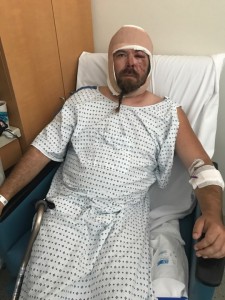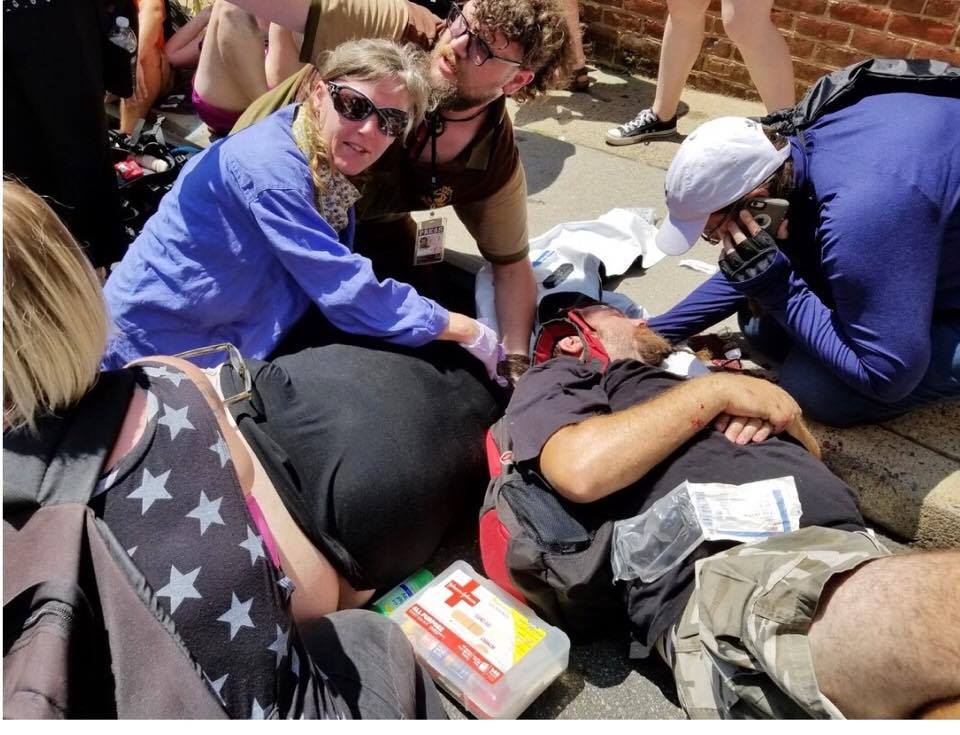News
Charlottesville Victim: Trump’s Response Showed “What Side He Was On”
By: Susan Tebben
Posted on:
The memories of August 12 in Charlottesville, Virginia, are still a bit foggy for Bill Burke, but the pain of his injuries reminds him of how far the country has to go.

Photo courtesy of Annie Jeffers Burke
Burke, of Hockingport, is still healing from significant head injuries and arm and leg abrasions allegedly caused by James Alex Fields, who is accused of driving a vehicle through a crowd of people protesting the presence of white nationalists in that city.
That attack led to the death of Heather Heyer. Heyer was next to Burke when the incident occurred, and he told his wife, Annie Jeffers Burke, that she lay next to him in the hospital as doctors tried to revive her.
“He said he could feel the compressions (being performed on Heyer)…they were so close they were touching,” Jeffers Burke told WOUB.
Burke is slowly remembering the events of that day, with the help of news footage that Jeffers Burke said they watch from time to time.
He went to Charlottesville after a colleague at a conference spoke about the fear in her town. White nationalist groups had just announced their plan to march there and fight to keep a statue of Robert E. Lee in a public park there.
So Burke and a group joined hundreds that decided to create a counter-protest.
The two groups were in separate parks in the city, until the white nationalist groups had their rally shut down. Then, Burke said, they took to the streets.
“We could see them running around to the back of pickup trucks, and just marching through the streets,” Burke said.
After police surrounded the counter-protesters, in a display Burke said could have been seen as both isolation and protection, the counter-protesting crowd began to walk away from the park.
As Burke and dozens more people rounded a corner onto another street, they heard the revving of an engine.
“I could hear the car coming, and when I turned around, that’s when it all happened,” he said.

Photo courtesy of Annie Jeffers Burke
Along with Burke, 18 people were injured, and Heyer sustained fatal injuries. Burke said he’s not sure whether he was hit by the car, or by the impact of people in front of him. His wife, who was in Ohio at the time, said a woman took his phone and called her at his request. The woman, who is unnamed even though she followed Burke to the hospital to give his wife updates, said Heyer may have fallen on Burke during the chaos.
Burke said he plans on marching again, once he’s healed. The fact that protesters were attacked combines with what he calls a lack of response from President Donald Trump in driving Burke to continue protesting.
He compared this attack to vehicle attacks in France and England, and when he listened to Trump’s first response to the Virginia incident, he hoped to hear the same sort of condemnation.
“He did call those (France and England attacks) terrorists attacks, and then when he didn’t call this one a terrorist attack…that pretty much told me exactly what side he was on,” Burke said.
Watching the events unfold, Burke is more determined than ever, and more aware of how much there is to do.
“This woke my eyes up to, you know, how much work we have to do to stop racism and bigotry and all that,” Burke said.

